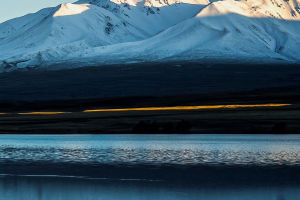There are many famous glaciers in the world, and glaciers all exist in extremely cold places. The Antarctic and Arctic on the earth are cold all year round, so there are a large number of glaciers. In other areas, only the tops of mountains can form glaciers.
To form a glacier, not only the mountain must have a certain height, but also the mountain peak should not be too steep, because the mountain peak is too steep, and the falling snow slides down the mountain peak, and no snow can be formed at all, let alone a glacier. When snowflakes fall on the ground, they will change with the changes of the external environment, and eventually become spherical snow particles, which are the main "raw materials" of glaciers. After the snow grains are formed, the hardness and compactness of the snow grains increase over time, slowly forming glacial ice. Under the action of gravity, glacier ice slowly flows down at a speed that ordinary people cannot detect, and over time a glacier is formed.
When it comes to the famous glaciers, the Matterhorn must be mentioned. The Matterhorn is located on the border between Switzerland and Italy, with an altitude of 4478 meters. It is a pillar standing straight to the sky. Its special triangular cone shape has become the representative of the Swiss Alps. Metallic glow.
There are more than 100 lakes of various sizes around the Matterhorn, and there are many hiking routes. Hiking is one of the best ways to watch the magnificent scenery of the Matterhorn in summer. Compared with the snowy peaks of the Jungfrau Mountains, the mountains, peaks and glaciers here are more majestic and magnificent, and the reflections of the Matterhorn and its alpine lakes can be said to be the "sweet crown" of the Alps.
The Aletsch Glacier is the largest and longest glacier in the Alps, located in the Bernese Mountains in south-central Switzerland, with an area of 171 square kilometers. Sports such as skiing, climbing and glacier excursions are popular in this area. It is divided into Great Aletsch Glacier, Middle Aletsch Glacier and Upper Aletsch Glacier. The Aletsch Glacier has formed a long and narrow ice tongue because it gradually slides down to the bottom of the mountain under the influence of gravity, which looks very distinctive.


